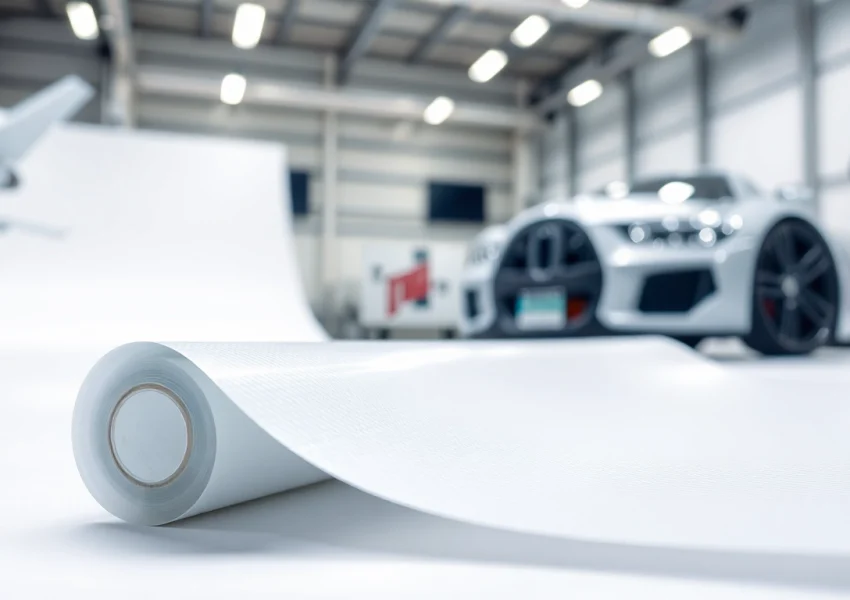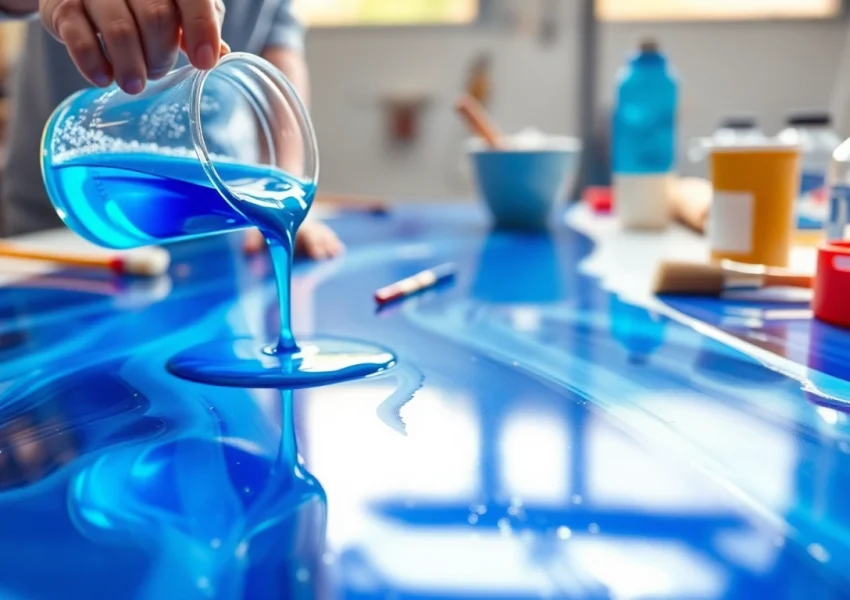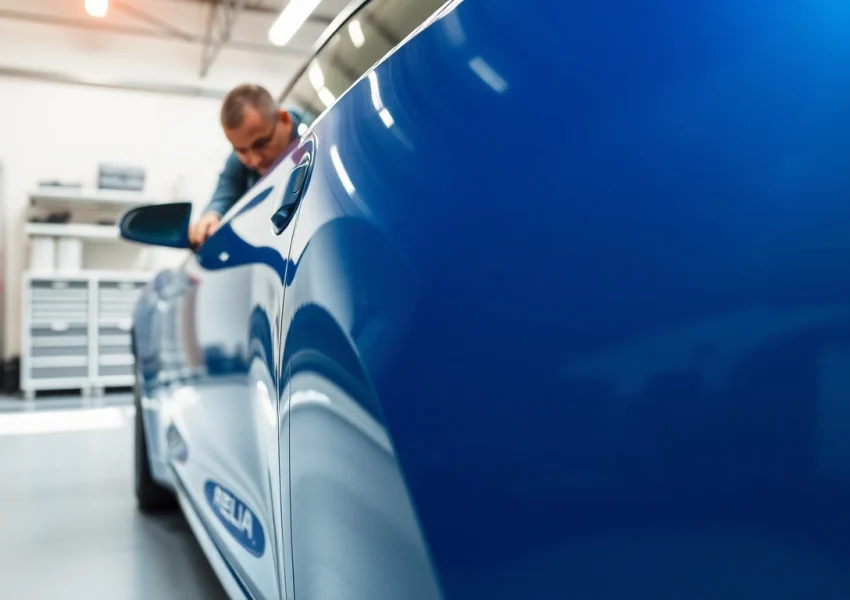Understanding Infusion Resins
Infusion resins are advanced polymer materials specifically designed for use in composite manufacturing processes, such as vacuum infusion. These resins play a crucial role in modern manufacturing, particularly in industries like aerospace, automotive, and marine, where strength, lightweight properties, and durability are of paramount importance. Infusion resins enable the creation of complex composite structures that not only meet but often exceed performance standards. To learn more about infusion resins and their benefits, let’s delve deeper into their definitions, characteristics, and applications.
What are Infusion Resins?
Infusion resins are low-viscosity liquid polymers that are applied using a vacuum-infused process. The infusion method allows the resin to be drawn into the laminate through a vacuum, effectively saturating the fibers without trapping significant amounts of air. This technique not only enhances the structural integrity of the finished product but also reduces labor costs compared to traditional lay-up methods.
There are two primary types of infusion resins: epoxy and polyester. Epoxy resins are known for their superior mechanical properties and chemical resistance, making them the preferred choice in high-performance applications. Polyester resins, while generally lower in cost, may suffice for less demanding environments.
Key Properties of Infusion Resins
The effectiveness of infusion resins depends on several key properties:
- Viscosity: Low viscosity is essential for allowing the resin to flow easily into the reinforced fabric.
- Curing Time: The time required for the resin to harden. Longer working times can improve user experience during the infusion process.
- Mechanical Strength: The final product must exhibit high tensile and compressive strength to effectively perform in demanding applications.
- Thermal Stability: Infusion resins should withstand the environmental conditions they’ll encounter during their lifespan.
- Adhesion: Effective bonding with a range of materials enhances the structural integrity of composites.
Common Applications of Infusion Resins
Infusion resins are employed across a wide range of industries:
- Aerospace: Used in the manufacturing of lightweight components such as wings and fuselage parts, providing high performance with reduced weight.
- Automotive: Infusion resins contribute to fabricating components that require both strength and lightweight properties, applicable in parts such as body panels and structural elements.
- Marine: Ideal for boats and yachts, infusion resins help create durable hulls that can withstand harsh marine environments.
- Wind Energy: Utilized in fabricating blades for wind turbines, infusion resins ensure optimal performance under varying environmental conditions.
Benefits of Using Infusion Resins
Strength and Durability in Composites
One of the primary advantages of infusion resins is their ability to enhance the strength and durability of composite materials. When infused properly, these resins fill the voids between fibers, creating a denser and more resilient structure. This characteristic makes composites significantly stronger than traditional materials like metals or woods, while keeping the weight low.
Controlled Flow and Viscosity
The low viscosity of infusion resins plays a critical role in allowing for controlled flow during the infusion process. The ability to manage the flow helps ensure that the resin saturates the fibers evenly, avoiding dry spots and potential weaknesses in the composite material. This control further enhances the final part’s performance, resulting in a uniform and high-quality product.
Cost-effectiveness in Production
Infusion resins can lead to significant savings in production costs. The vacuum infusion process requires less manual labor than traditional methods and allows for faster production cycles. Additionally, the ability to create fully saturated components reduces the need for additional finishing processes, which can further lower costs.
Choosing the Right Infusion Resins
Factors to Consider for Applications
When selecting infusion resins, several factors must be taken into account:
- Application Requirements: Understanding the specific mechanical properties and environmental conditions the final product will experience is crucial in selecting the appropriate resin type.
- Curing Conditions: Noting the temperature and humidity levels during production can influence the choice of resin to ensure optimal performance.
- Compatibility: Ensuring the resin is compatible with the reinforcements (e.g., fiberglass, carbon fiber) and any other materials being used is essential for a successful infusion.
Comparing Different Types of Infusion Resins
Infusion resins can be categorized into various types, each presenting unique advantages and applications:
- Epoxy Resins: Known for their superior mechanical properties, epoxy resins excel in environments requiring high strength and chemical resistance.
- Polyester Resins: Generally lower in cost, these are suitable for less demanding applications but may not provide the same level of performance as epoxy.
- Vinyl Ester Resins: Offering excellent corrosion resistance and strength, these resins bridge the gap between polyester and epoxy, making them ideal for marine applications.
Impact of Temperature and Environmental Factors
The performance of infusion resins is highly influenced by temperature and environmental factors. Higher temperatures can accelerate the curing process, while cooler conditions may extend it. Understanding the operating temperature range during cure and usage is vital to choose the optimal infusion resin. Furthermore, environmental conditions, such as humidity, can also affect resin behavior, impacting the final composite’s quality.
Best Practices for Working with Infusion Resins
Preparation and Mixing Techniques
To achieve the best results with infusion resins, proper preparation and mixing techniques are vital:
- Accurate Measurement: Ensure accurate measurements of all components, adhering strictly to the manufacturer’s recommended ratios.
- Mixing Procedure: Follow a thorough mixing procedure, using a mechanical mixer if necessary, to achieve uniform consistency.
- Degassing: If possible, degas the mixed resin to eliminate trapped air bubbles before starting the infusion.
Safety Measures and Precautions
Working with infusion resins requires several safety measures:
- Personal Protective Equipment (PPE): Always wear appropriate PPE, including gloves, goggles, and respiratory protection.
- Ventilation: Work in a well-ventilated area to minimize inhalation of fumes.
- First Aid Awareness: Familiarize yourself with first aid procedures in case of accidental skin contact or inhalation.
Post-application Handling for Optimal Results
After applying infusion resins, proper handling is essential for achieving optimal performance:
- Curing Time: Allow sufficient curing time without disturbance for the resin to achieve maximum strength.
- Storage Conditions: Store the final product in a controlled environment to avoid thermal shocks and other detrimental effects.
- Regular Inspections: Conduct routine inspections of cured parts to assess for any potential defects or performance issues.
Future Trends in Infusion Resins Technology
Innovation in Composite Materials
The composite manufacturing industry is continuously evolving, and infusion resins are at the forefront of this innovation. New formulations and composite reinforcements are being developed to enhance mechanical properties and functionality further. Advanced materials, including bio-based resins and nanocomposites, are gaining traction.
Environmental Sustainability in Resin Production
With a growing emphasis on sustainability, the production of infusion resins is also shifting toward environmentally friendly practices. Manufacturers are increasingly exploring bio-based alternatives, sustainable sourcing, and recyclable materials to reduce the environmental impact of resin production.
Emerging Applications in Various Industries
The versatility of infusion resins is opening doors to new applications across industries. From construction materials to electronics, the potential for using composite materials infused with modern resins is vast. As technological advancements continue, we can expect infusion resins to play a pivotal role in future innovations.




